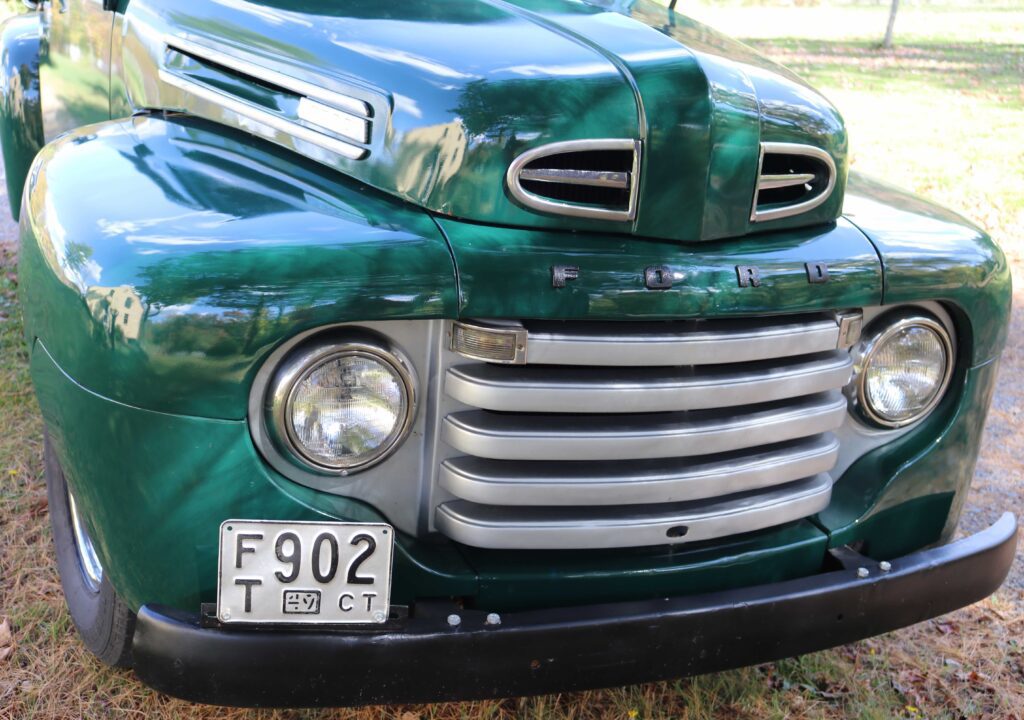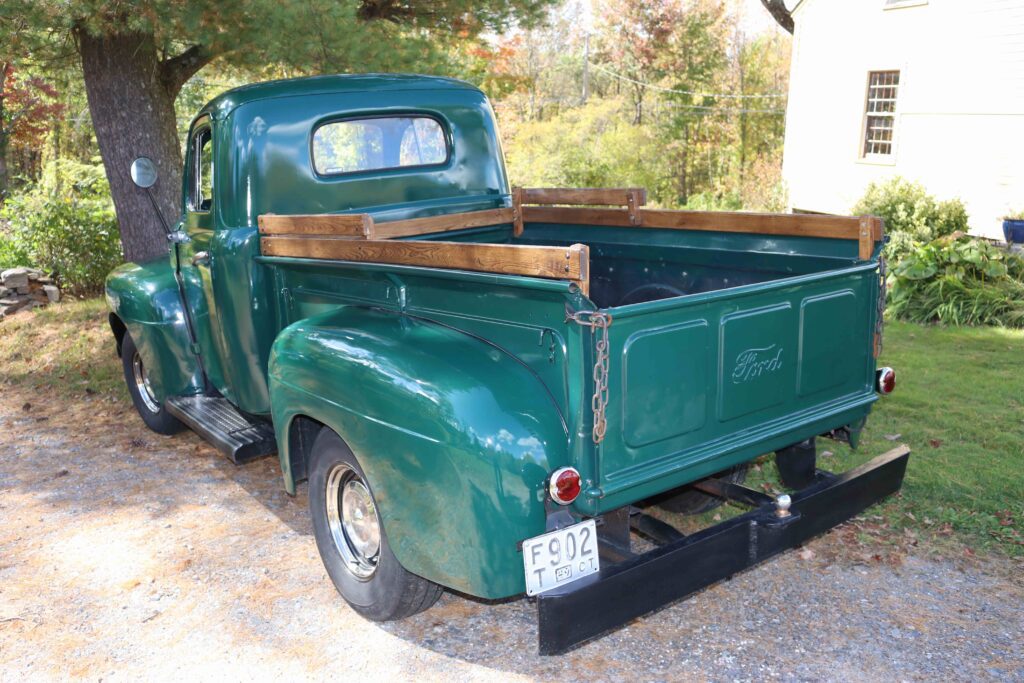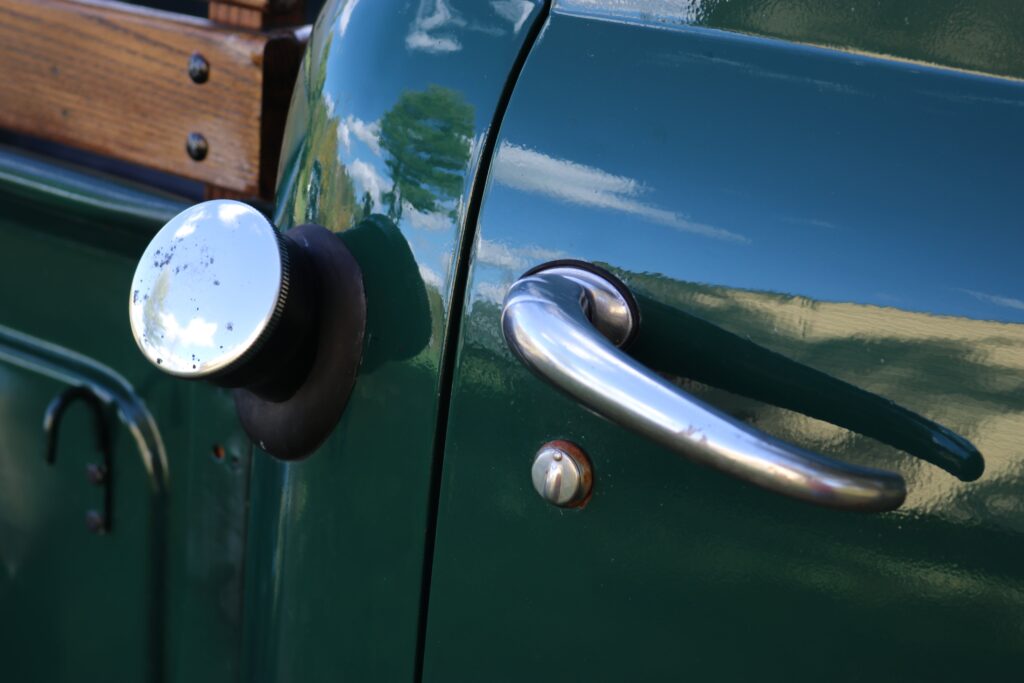LITCHFIELD, CT – Jeff Crampton of Litchfield wasn’t like so many others who get the urge to acquire an old vehicle and then quickly get in over their heads. He neither gave up nor forked over large sums of money for someone else to do the restoration job.
Crampton had 20 years experience as a motorcycle mechanic, had spent time as operations manager for a company where he was responsible for a fleet of trucks, and had also owned a refuse company with trucks that required repair before tackling his first restoration.

The project that he took on seven years ago was a 1949 Ford F1 pickup. He’d owned one when he was in his 20s and always wanted another. “I like the shape of these trucks. I just love the shape of these trucks. I was always a motorcycle guy. Had a car, once and twice here and there, but I always had motorcycles. Never had a truck and I thought this was pretty cool. I had sold my motorcycle and I bought the truck. That’s how that happened,” he said of his first F1.
His original F1 was a driver. “Rebuilt the motor in it and never got the body fixed up or anything like that. I just drove it for a while,” he said, recalling that it was sold to a friend when marriage and kids came along.
See the 1949 Ford F1 in action in this YouTube video…
—
Ford introduced its “F” series truck line for the 1948 model year and the first generation version lasted through the 1952 model year. The F-1 was a half-ton truck with a 6½-foot bed.
Crampton bought his current F1 as part of a package deal. The previous owner in Bethlehem had a 1948 F1 decaying in his woods as well as a 1949 model in his garage that had been sitting for 26 years. The seller had bought the two pickups together as well with same idea of getting the 1949 roadworthy and using the 1948 for parts.
“He thought he was going to fix it up and do what I did. He was driving around and blew a brake line. Scared him and (he) ended up parking the truck and never touched it again,” Crampton said.


—
Despite being garaged, the 1949 F1 wasn’t a jewel. “This was all here in flat black, lot of Bondo, the floors were gone, the cab corners were gone. It was in rough shape. The motor wasn’t stuck but the valves were stuck,” he said.
“I had to use a case of PB Blaster and about two weeks later I got the thing to spin over and got it started. It sounded really funny. I realized there was nothing coming out of the exhaust, so I cut the exhaust off and it came out acorns. Stuffed with acorns. It started and it ran beautiful but it sat too long.”
The engine block was cracked. Crampton went through two more cracked blocks before extracting the motor from the 1948 F1 and trying it. Within a half-hour of installing the 239-cubic-inch flathead V8, with three-speed manual transmission, he had it running.

Somehow, the project got out of hand, though, as Crampton kept working to turn the F1 into what is now a beauty. “I was just going to rebuild the motor and drive train and make sure it ran good, and to hell with the body, but I ended up doing this,” he said. “I got obsessed. I would work two to three hours every day after work and all day Saturday – a good year-and-a-half, two years into it.”
The 75-year-old F1 finally got on the road for good in late fall 2019 and is thoroughly reliable. Crampton uses it for grocery shopping and trips to home improvement stores. He’s even taken it to Vermont. “It’s easy to drive. I can run down the road at 55, 60 miles per hour, no problem,” he said.

The F1 does have some interesting elements. The handle to open the hood is disguised as a trim bar inside the front of the hood. There’s also what appears to be a retractable vent between the hood and the windshield. “Most people think it’s for ventilation when it’s hot inside the cab but it’s not true. It’s built …to pressurize the cab cause most of these vehicles ran down dirt roads in those days, so it would pressurize the cab so the dust would stay out of the cab.”
Countless hours went into restoring the F1. “I ground five layers of paint off this thing. There was a primer, black, blue, white and a flat black, and I hand ground everything right down to bare metal so I could patch everything with steel. Very, very little Bondo in it,” Crampton said.
His attention to detail shows.



 RIDE-CT – Classic Cars Celebrating Classic Cars in Connecticut
RIDE-CT – Classic Cars Celebrating Classic Cars in Connecticut


